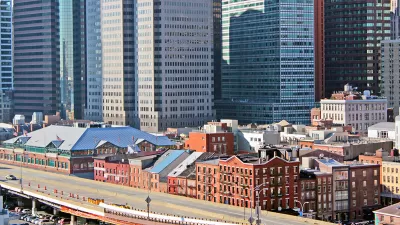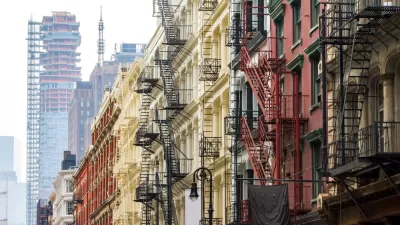The de Blasio Administration set lofty goals for the creation and preservation of housing in New York. So how's that going?

Sally Goldenberg reports: "The de Blasio administration closed financing on more than 23,000 below-market-rate homes in the past fiscal year, an effort helped by the preservation of Stuyvesant Town in Manhattan and the frenzied pace of development as a lucrative tax break was set to expire in Albany."
"City Hall has so far financed 52,936 units of low- to moderate-income housing since de Blasio took office….That is enough housing for 130,000 New Yorkers," adds Goldenberg.
The de Blasio Administration announced the Housing New York program in May 2014, setting a goal to build 80,000 new apartments for low- and middle-income tenants while preserving 120,000 existing units fitting the same description. As Goldenberg notes, however, the strides made toward that goal so far are threatened by the expiration of the 421-a tax abatement.
Goldenberg also describes another key mechanism in the city's efforts to reach the Housing New York goals: the Mandatory Inclusionary Zoning policy, which, approved in March, is intended to create 12,000 apartments over the next ten years.

Study: Maui’s Plan to Convert Vacation Rentals to Long-Term Housing Could Cause Nearly $1 Billion Economic Loss
The plan would reduce visitor accommodation by 25,% resulting in 1,900 jobs lost.

Alabama: Trump Terminates Settlements for Black Communities Harmed By Raw Sewage
Trump deemed the landmark civil rights agreement “illegal DEI and environmental justice policy.”

Why Should We Subsidize Public Transportation?
Many public transit agencies face financial stress due to rising costs, declining fare revenue, and declining subsidies. Transit advocates must provide a strong business case for increasing public transit funding.

Paris Bike Boom Leads to Steep Drop in Air Pollution
The French city’s air quality has improved dramatically in the past 20 years, coinciding with a growth in cycling.

Why Housing Costs More to Build in California Than in Texas
Hard costs like labor and materials combined with ‘soft’ costs such as permitting make building in the San Francisco Bay Area almost three times as costly as in Texas cities.

San Diego County Sees a Rise in Urban Coyotes
San Diego County experiences a rise in urban coyotes, as sightings become prevalent throughout its urban neighbourhoods and surrounding areas.
Urban Design for Planners 1: Software Tools
This six-course series explores essential urban design concepts using open source software and equips planners with the tools they need to participate fully in the urban design process.
Planning for Universal Design
Learn the tools for implementing Universal Design in planning regulations.
Smith Gee Studio
Alamo Area Metropolitan Planning Organization
City of Santa Clarita
Institute for Housing and Urban Development Studies (IHS)
City of Grandview
Harvard GSD Executive Education
Toledo-Lucas County Plan Commissions
Salt Lake City
NYU Wagner Graduate School of Public Service





























